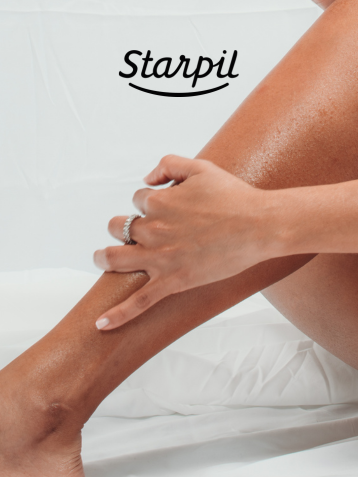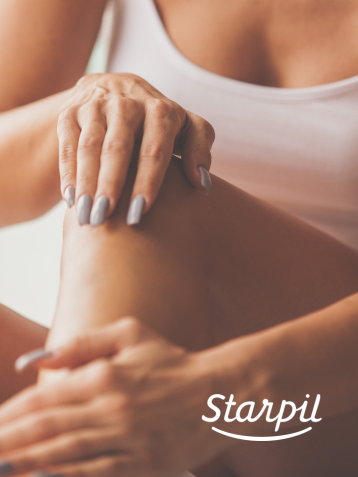How Long Does Waxing Last?

If you're new to waxing or considering switching from another hair removal method, you might be wondering, "How long does waxing actually last?" The answer isn't as straightforward as you might think, but understanding the basics of hair growth can help you get the most out of your waxing sessions.
Understanding Hair Growth Cycles
Before we talk about how long waxing lasts, it's crucial to understand that your hair grows in cycles. There are three main phases of hair growth:
- Anagen (Growth) Phase: This is the stage when your hair is actively growing. It can last anywhere from 2 to 7 years, depending on the body part.
- Catagen (Transition) Phase: In this brief phase, lasting about 10 days, the hair follicle shrinks and detaches from the dermal papilla.
- Telogen (Resting) Phase: This is when the hair is released and falls out. New hair begins to form in the follicle, and the cycle starts again.
At any given time, different hairs on your body are in different phases of this cycle. This is why you might notice some hair regrowth soon after waxing, while other areas remain smooth for longer.
How Long Does Waxing Typically Last?
- Facial Hair: Usually lasts 2 to 3 weeks
- Body Hair: Typically lasts 3 to 4 weeks
- Bikini Area: Often lasts 3 to 4 weeks
- Legs: Can last up to 4 weeks
Remember, these are averages, and your individual results may vary. Factors that can influence how long your wax lasts include your hair growth cycle, hair thickness or type, and how consistently you wax.
READ: Waxing vs. Shaving: What is the Best Method for Hair Removal?

Factors Affecting Waxing Duration
Several factors can impact how long your waxing results last:
- Hair Growth Cycle: As mentioned earlier, your hair growth cycle plays a significant role. Hairs in the telogen phase will fall out naturally, while those in the anagen phase will continue to grow.
- Hair Thickness: Coarser hair tends to be more noticeable when it grows back, making it seem like the wax didn't last as long.
- Waxing Frequency: Regular waxing can lead to finer, slower-growing hair over time, extending the duration between sessions.
- Hormones: Hormonal changes due to menstruation, pregnancy, or medical conditions can affect hair growth rates.
- Diet and Lifestyle: Certain foods and lifestyle factors can influence hair growth. A balanced diet rich in vitamins and minerals supports healthy hair growth cycles.
- Technique: Proper waxing technique ensures hair is removed from the root, leading to longer-lasting results.
READ: Waxing at Home: The Complete Beginner’s Guide
Tips for Longer-Lasting Waxing Results
Want to make your wax last as long as possible? Try these tips:
- Wait for Proper Hair Length: For best results, hair should be about 1/4 inch long before waxing. This ensures the wax can grip the hair effectively.
- Exfoliate Regularly: Gentle exfoliation between waxing sessions can help prevent ingrown hairs and promote smoother skin.
- Avoid Shaving Between Waxes: Shaving disrupts the hair growth cycle and can make your next waxing session less effective.
- Stay Hydrated: Well-hydrated skin is more supple, making hair removal easier and potentially less painful.
- Use Quality Wax: Using high-quality, salon-quality waxes like Starpil’s waxing products improves hair grip and removal without breakage or uneven coverage, resulting in better, longer-lasting results.
- Consider Your Timing: If possible, schedule your waxing sessions for the week after your period when skin tends to be less sensitive.
- Be Consistent: Regular waxing can lead to finer, sparser hair growth over time, extending the duration between sessions.
READ: Can I Shower After Waxing?

When to Schedule Your Next Wax
Knowing when to book your next waxing appointment is key to maintaining smooth, hair-free skin. Here are some guidelines:
- For Beginners: Start with appointments every 3-4 weeks. This helps weaken the hair follicles over time.
- For Regular Waxers: As you continue your waxing journey, you might find you can go 4-6 weeks between sessions as your hair growth becomes finer and slower.
- Before Special Events: Always wax 3-5 days before a big event. This allows any potential redness or sensitivity to subside while ensuring you're still smooth for the big day.
Remember, everyone's hair growth is different. Pay attention to your body and adjust your waxing schedule accordingly.
READ: Complete Guide to Roll-On Waxing
Final Thoughts
Understanding hair growth cycles and how they affect your waxing results is the first step to achieving longer-lasting smoothness. While waxing typically lasts 3-4 weeks, with proper care and regular sessions, you may find your results lasting even longer over time.
Remember, patience is key. It may take a few waxing sessions for your hair to start growing back finer and slower. Stick with it, use quality products like those from Starpil Wax, and soon you'll be enjoying weeks of smooth, hair-free skin.








Commentaires